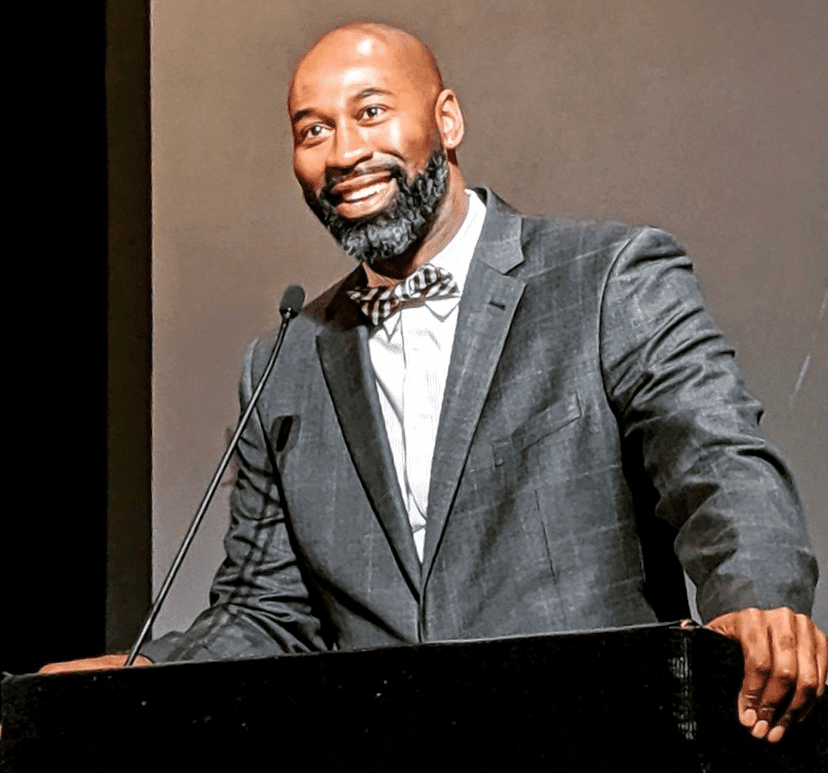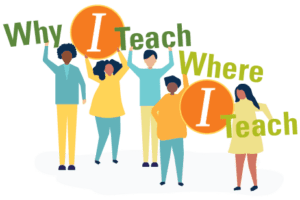Why I Teach Where I Teach: To Fulfill a Sense of Community
For the past 12 years, I have taught students with severe cognitive delays at Maryvale High School in Phoenix. Maryvale is one of the largest high schools in Arizona with…

For the past 12 years, I have taught students with severe cognitive delays at Maryvale High School in Phoenix. Maryvale is one of the largest high schools in Arizona with 3,000 students. Many of the students are immigrants or first-generation American citizens. The school is 90% Latino, 7% Black, and 3% Native/Caucasian/Asian. The school is in what most people call the toughest neighborhood in Arizona. I am not an Arizona native, so I did not know the reputation of the neighborhood when I started. I simply interviewed at the Phoenix Union High School District office and they told me that I would be a great fit at Maryvale. When I informed my friends where I accepted a teaching job, they said things like, “Scaryvale?!” For me, I just didn’t see it. The school campus is very safe and I spent much of my childhood in Trenton, New Jersey (a tough place in its own right).
Phoenix. Maryvale is one of the largest high schools in Arizona with 3,000 students. Many of the students are immigrants or first-generation American citizens. The school is 90% Latino, 7% Black, and 3% Native/Caucasian/Asian. The school is in what most people call the toughest neighborhood in Arizona. I am not an Arizona native, so I did not know the reputation of the neighborhood when I started. I simply interviewed at the Phoenix Union High School District office and they told me that I would be a great fit at Maryvale. When I informed my friends where I accepted a teaching job, they said things like, “Scaryvale?!” For me, I just didn’t see it. The school campus is very safe and I spent much of my childhood in Trenton, New Jersey (a tough place in its own right).
Maryvale was the first “typical” school that I have taught at. The other two schools where I’ve worked are special schools for students who have autism. So, when I started, I stayed in my classroom and only dealt with the students who had severe cognitive delays. I convinced myself that “typical” students were not for me. It was not until I bumped into a teacher at school on a Saturday, who told me that I should go into the gym to see something. There, the school’s social justice club (Panthertown) was having their annual “camp,” where they did a bunch of activities designed to encourage students to break free of the things (race, gender, sexuality, ability, etc.) that prevent them from connecting with their peers. I absolutely loved it and found a reason to break out of my comfort zone and interact with all of the students at Maryvale. When I did that, I started to love the community.
The better I got to know the students, culture, and community of Maryvale, the more I was able to make the connection to my individual experiences. While the community looks a lot different than the communities where I grew up in Trenton, the main piece of the cultures and people align. Maryvale is a community that relies on all of the individuals for any successes. The students and community members of Maryvale rely on teachers to do more than teach. That was my same experience in New Jersey. I realize that “marginalized” communities require more than just the standard American way of life. Our communities require a collective effort to lift each other up. As a teacher, I take that seriously, because I know what good teachers did for me and my community. To be truly effective, teachers must do more than simply teach students. They have to become a real part of the community. And, I absolutely love that I found that. I am positive that I could not teach at a school where all of the teachers just taught lessons and went home. I need for my school and its surrounding area to be my community.
My teaching passion has been, and always will be with students who have cognitive delays. My life’s passion has always been social justice, specifically issues that affect Black people. Recently, I’ve tried to figure out ways to talk about those two things simultaneously. I had a difficult time connecting the two “concepts.” However, I started doing work with implicit bias and that turned it around. What it also did was to help my awareness and passion for issues that immigrants and Latinx students go through. I’ve become a much more well-rounded educator and person because of this work. Lastly, it has helped me connect the communities that I love to each other.
The 2019 Arizona Teacher of the Year, Kareem Neal is a self-contained special education teacher, having taught students with severe cognitive delays for 21 years. Kareem was awarded an honorary doctorate at Northern Arizona University.
This post is a part of an ongoing series, called “Why I Teach Where I Teach,” which asks educators in high-need schools to share what has attracted (and kept) them in the challenging environments they’re in. They share important stories and experiences that should remind us all of the power of strong school leadership, a network of supportive colleagues, and the genuine opportunity to have a say in schoolwide decisions. Listen up! They’re teaching us.